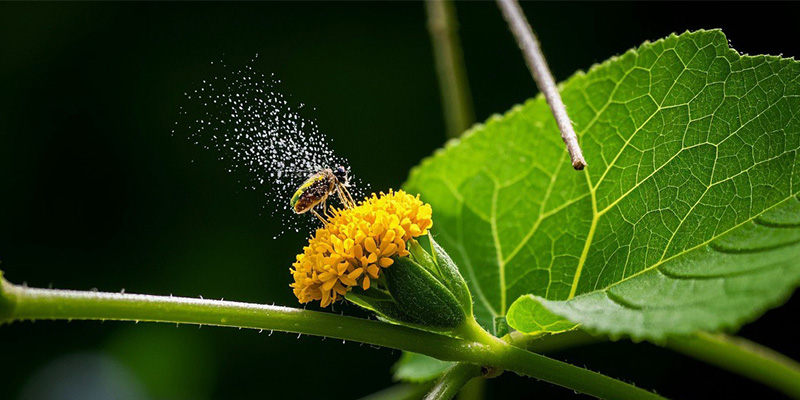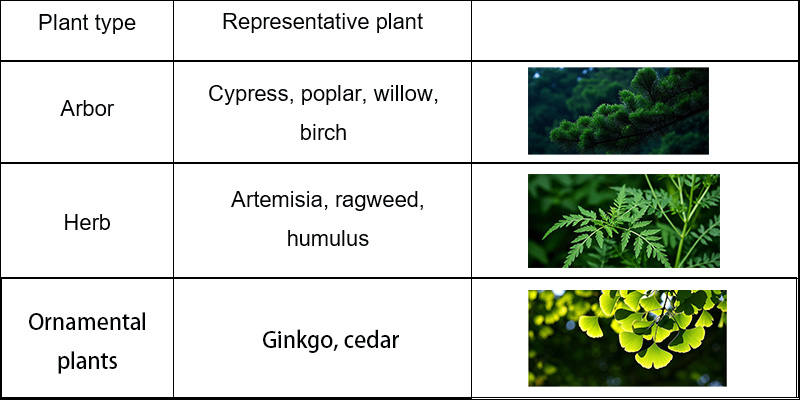Spring is the season of high incidence of allergies,especially when there is a lot of pollen.
Consequences of spring pollen allergy
1.Acute symptoms
- Respiratory tract: sneezing, nasal congestion, runny nose, itchy throat, coughing, and in severe cases, asthma (wheezing, difficulty breathing)
- Eyes: conjunctivitis (redness, tearing, burning sensation
- Skin: hives, eczema, or facial swelling
- Whole body: fatigue, headache, sleep disturbance
2.Long term effects
- Repeated allergies may worsen chronic rhinitis, sinusitis, or asthma
- Reduced quality of life, affecting work, study and outdoor activities
Common pollen allergy-causing plants in spring
Pollen allergy is mainly caused by wind-pollinated plants (which rely on wind for pollination). Their pollen is light, large in quantity, and easy to spread. Common allergens include:
Preventive measures for pollen allergies
1.Reduce exposure to pollen
- Avoid peak hours: Pollen concentration is highest between 10am and 4pm on sunny days, so avoid going out
- Close doors and windows: Use fresh air system or air conditioning to prevent pollen from entering the room
- Outdoor protection: Wear anti-pollen masks (such as N95), goggles, long-sleeved clothes, and take a shower and change clothes immediately after returning home
2.Environmental control
- Use a HEPA filter air purifier and clean the air conditioning filter regularly
- Avoid placing flowers indoors (such as lilies, sunflowers and other insect-pollinated flowers, which are generally low risk but may aggravate symptoms in sensitive people)
3.Early intervention
- Start using antihistamines 1-2 weeks before allergy season (doctor’s guidance required)
- Highly sensitive people can detect allergens and develop targeted protection plans
Treatment for pollen allergy
1.Drug treatment
- Antihistamines: Cetirizine, Loratadine (to relieve itchy nose and sneezing)
- Nasal spray hormones: budesonide, mometasone furoate (relieve nasal congestion and inflammation)
- Leukotriene receptor antagonists: Montelukast sodium (assistant in the control of asthma
- Emergency: Use salbutamol inhaler during asthma attack, and seek medical attention immediately if the attack is severe
2.Immunotherapy (desensitization therapy)
- Through sublingual administration or subcutaneous injection of allergen extracts, tolerance is gradually improved, suitable for people with long-term and recurrent allergies
The role of oxygen concentrators in allergy treatment
1.Applicable scenarios
- Pollen allergy triggers severe asthma or breathing difficulties, resulting in decreased blood oxygen saturation (<95%)
- The patient has chronic respiratory diseases (such as COPD, pulmonary fibrosis), and the symptoms are aggravated during the pollen season
2.Functions and limitations
- Supplemental oxygen supply: relieves hypoxia and prevents organ damage, but cannot treat allergies themselves
- Need to cooperate with other treatments: anti-allergic drugs, bronchodilators, etc. must be used at the same time
- Non-essential equipment: Mild allergies do not require an oxygen concentrator, and can only be used after a doctor’s evaluation
3.Precautions for use
- The oxygen concentrator needs to clean the filter regularly to prevent pollen from clogging the air inlet
- Air purifiers are still needed indoors to reduce pollen concentration
Post time: Apr-15-2025


